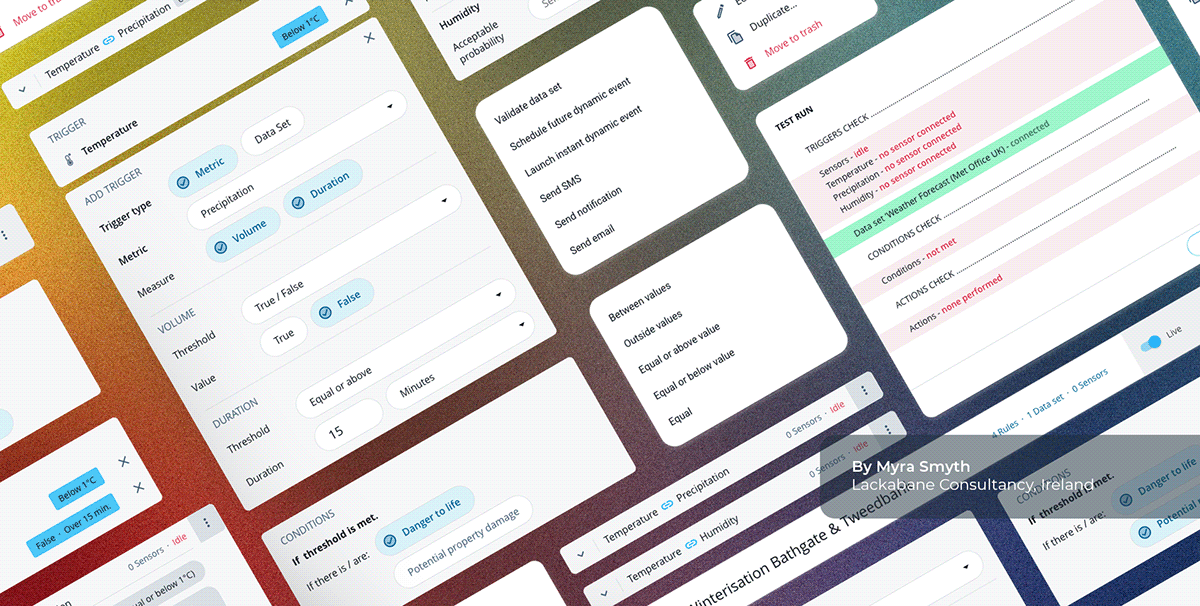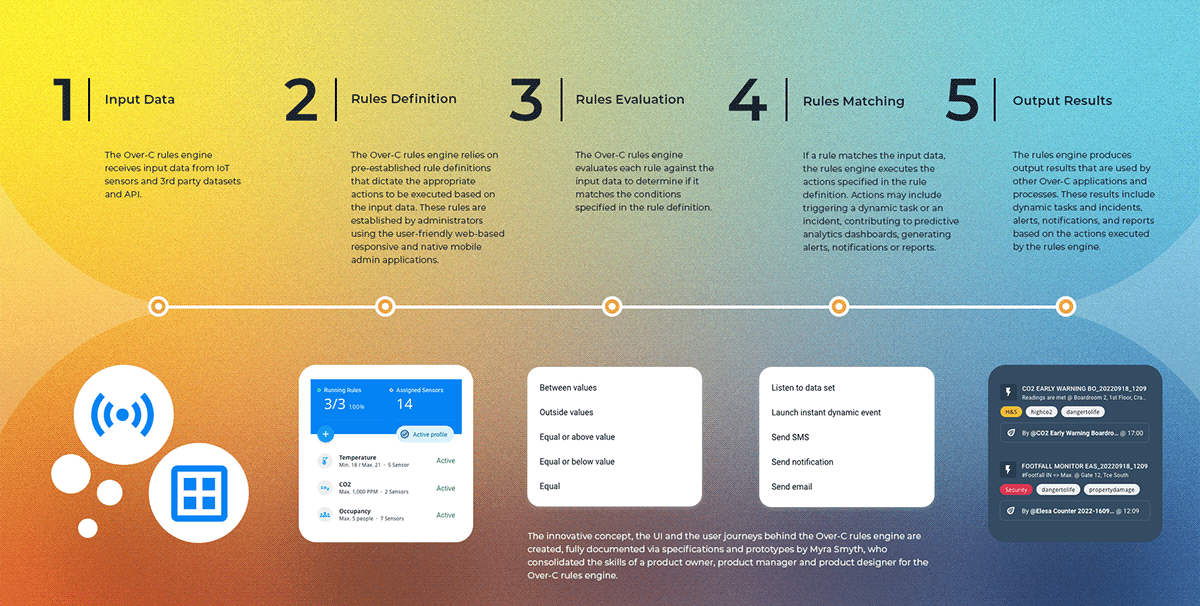
01 | Process
Research. Competitive Analysis. Innovation. Information Architecture. Design System. Prototyping & UI Specification. Stakeholder Review.
02 | The Challenge
Over-C employs IoT smart sensors as part of its hardware infrastructure. Initially, clients were content with receiving readings from a single IoT sensor with a specific metric. However, as time passed, numerous use cases were conveyed to Over-C, highlighting the requirement for dynamic data evaluation and matching capabilities. These use cases emphasized the necessity for the system to generate a range of dynamic events.
In essence, clients sought a solution that would introduce automation into their day-to-day business operations. This solution would leverage IoT and third-party datasets, utilizing real-time and predictive data analysis to facilitate automated decision-making processes.

03 | The Solution
In the designed solution, I have successfully addressed the crucial aspects related to the functionality of the rules engine.
According to the concept I created, the Over-C rules engine utilizes predefined rule definitions that establish the conditions and actions to be executed based on the input data. These rule definitions are created and managed by administrators through user-friendly Web-based responsive and native Mobile Admin applications.
I take complete ownership of the innovative concept, as well as the UI and user journeys implemented within the Over-C rules engine. These aspects have been meticulously documented through specifications and prototypes. Throughout the project, my responsibilities encompassed a range of skills, including product ownership, product management, and product design for the Over-C rules engine.
The concept behind Over-C Rules Engine
The Over-C rules engine receives input data from IoT sensors and 3rd party datasets and API.
Input Data: The rules engine receives input data, which may come from various sources such as a database, an API, or user input.
Rule Definitions: The rules engine uses predefined rule definitions that define the conditions and actions to be taken based on the input data. These rule definitions may be written in a domain-specific language or a more general-purpose programming language.
Rule Evaluation: The rules engine evaluates each rule against the input data to determine if it matches the conditions specified in the rule definition.
The Over-C rules engine evaluates each rule against the input data to determine if it matches the conditions specified in the rule definition.
Rule Matching: If a rule matches the input data, the rules engine executes the actions specified in the rule definition. Actions may include modifying the input data, generating alerts or notifications, or triggering other processes.
If a rule matches the input data, the rules engine executes the actions specified in the rule definition. Actions may include triggering a dynamic task or an incident, contributing to predictive analytics dashboards, generating alerts, notifications or reports.
Output Results: The rules engine produces output results that may be used by other systems or processes. These results may include modified input data, alerts or notifications, or other output based on the actions executed by the rules engine.
The rules engine produces output results that are used by other Over-C applications and processes. These results include dynamic tasks and incidents, alerts, notifications, and reports based on the actions executed by the rules engine.
04 | Skills & Software
Miro, Adobe Creative Suite, Trello.
05 | The Result
The concepts and documentation delivered surpassed the client's expectations.




